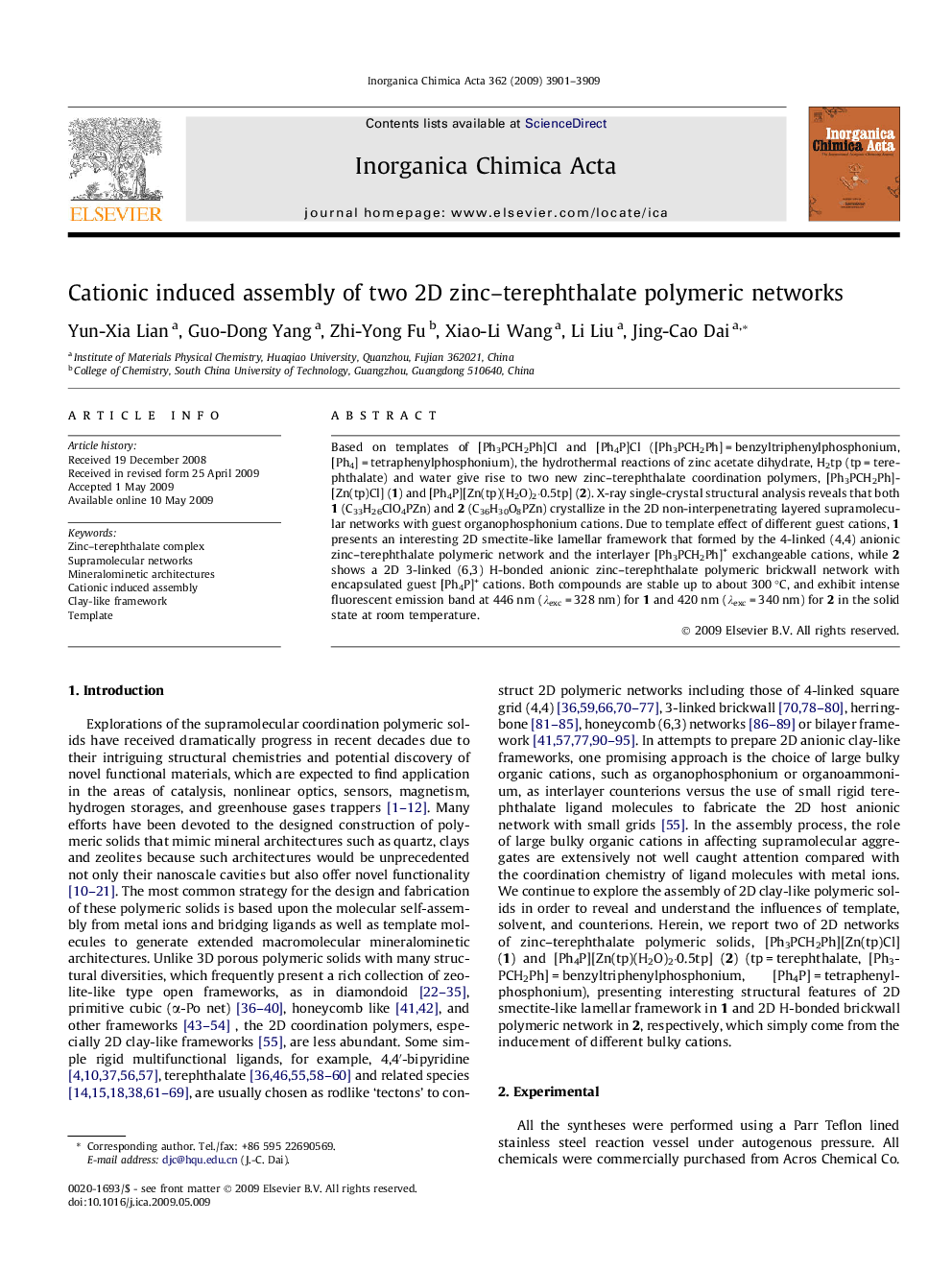| Article ID | Journal | Published Year | Pages | File Type |
|---|---|---|---|---|
| 1308289 | Inorganica Chimica Acta | 2009 | 9 Pages |
Based on templates of [Ph3PCH2Ph]Cl and [Ph4P]Cl ([Ph3PCH2Ph] = benzyltriphenylphosphonium, [Ph4] = tetraphenylphosphonium), the hydrothermal reactions of zinc acetate dihydrate, H2tp (tp = terephthalate) and water give rise to two new zinc–terephthalate coordination polymers, [Ph3PCH2Ph][Zn(tp)Cl] (1) and [Ph4P][Zn(tp)(H2O)2·0.5tp] (2). X-ray single-crystal structural analysis reveals that both 1 (C33H26ClO4PZn) and 2 (C36H30O8PZn) crystallize in the 2D non-interpenetrating layered supramolecular networks with guest organophosphonium cations. Due to template effect of different guest cations, 1 presents an interesting 2D smectite-like lamellar framework that formed by the 4-linked (4,4) anionic zinc–terephthalate polymeric network and the interlayer [Ph3PCH2Ph]+ exchangeable cations, while 2 shows a 2D 3-linked (6,3) H-bonded anionic zinc–terephthalate polymeric brickwall network with encapsulated guest [Ph4P]+ cations. Both compounds are stable up to about 300 °C, and exhibit intense fluorescent emission band at 446 nm (λexc = 328 nm) for 1 and 420 nm (λexc = 340 nm) for 2 in the solid state at room temperature.
Graphical abstractThe large bulky [Ph3PCH2Ph]+ and [Ph4P]+ cations induce the packings of two layered polymers [Ph3PCH2Ph][Zn(tp)Cl] (1) and [Ph4P][Zn(tp)(H2O)2·0.5tp] (2), respectively, in which 1 crystallizes in an interesting 2D smectite-like lamellar framework with interlayer [Ph3PCH2Ph]+ cations while 2 belongs to a brickwall network with encapsulated guest [Ph4P]+ cations. The novelty for 1 is in the ionic exchange activity.Figure optionsDownload full-size imageDownload as PowerPoint slide
